 W
WRicardo Almendáriz was a Guatemalan draftsman who accompanied Antonio del Río to the first excavation of pre-Columbian Maya ruins at Palenque in Chiapas, Mexico. Undertaken in May and June 1787, the expedition was performed under orders from Charles III of Spain, to investigate reports about the ruins from the inhabitants of the neighboring pueblo of Santo Domingo de Palenque. The team spent two weeks digging at the location, followed by three weeks studying the site.
 W
WAlfredo Barrera Vázquez was a Mexican anthropologist, linguist, academic and Mayanist scholar. He is noted for both his research into the historical Maya civilization of the pre-Columbian era and his contributions promoting literacy in Mayan languages and the culture of contemporary Maya peoples. He has been described as "...perhaps the greatest Maya scholar to emerge from the actual land of the Maya."
 W
WThomas Sylvester Barthel was a German ethnologist and epigrapher who is best known for cataloguing the undeciphered rongorongo script of Easter Island.
 W
WClaude-François Baudez was a French Mayanist, archaeologist and iconologist. He was honorary director of research at the French National Centre for Scientific Research, a specialist on the rituals and beliefs of Mesoamerica, particularly of the Maya civilisation.
 W
WFrans Blom was a Danish explorer and archaeologist. He was most associated with his research of the Maya civilization of Mexico and Central America.
 W
WGertrude "Trudi" Duby Blom was a Swiss journalist, social anthropologist, and documentary photographer who spent five decades chronicling the Mayan cultures of Chiapas, Mexico, particularly the culture of the Lacandon Maya. In later life, she also became an environmental activist. Blom's former home Casa Na Bolom is a research and cultural center devoted to the protection and preservation of the Lacandon Maya and La Selva Lacandona rain forest.
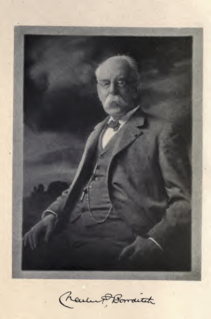 W
WCharles Pickering Bowditch was an American financier, archaeologist, cryptographer and linguistics scholar who specialized in Mayan epigraphy.
 W
WAbbé Charles-Étienne Brasseur de Bourbourg was a noted French writer, ethnographer, historian, archaeologist, and Catholic priest. He became a specialist in Mesoamerican studies, travelling extensively in the region. His writings, publications, and recovery of historical documents contributed much to knowledge of the region's languages, writing, history and culture, particularly those of the Maya and Aztec civilizations. However, his speculations concerning relationships between the ancient Maya and the lost continent of Atlantis inspired Ignatius L. Donnelly and encouraged the pseudo-science of Mayanism.
 W
WFrederick Catherwood was an English artist, architect and explorer, best remembered for his meticulously detailed drawings of the ruins of the Maya civilization. He explored Mesoamerica in the mid 19th century with writer John Lloyd Stephens. Their books, Incidents of Travel in Central America, Chiapas and Yucatán and Incidents of Travel in Yucatán, were best sellers and introduced to the Western world the civilization of the ancient Maya. In 1837, Catherwood was elected into the National Academy of Design as an Honorary member.
 W
WClaude-Joseph Désiré Charnay was a French traveller and archaeologist notable both for his explorations of Mexico and Central America, and for the pioneering use of photography to document his discoveries.
 W
WInga Clendinnen, was an Australian author, historian, anthropologist, and academic.
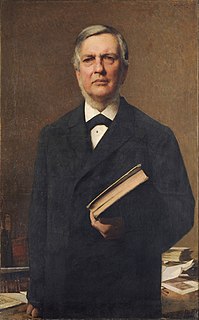 W
WErnst Wilhelm Förstemann was a German historian, mathematician, doctor of linguistics, librarian, and director of the Saxon State Library in Dresden. He is known as a founder of onomastics and folk etymology studies in Germany, and also for his seminal contributions made in the early years of Mayanist research, towards the decipherment and understanding of calendrical elements in the pre-Columbian Maya script.
 W
WJuan Galindo was an Anglo-Irish political activist and military and administrative officer under the Liberal government of the Federal Republic of Central America. He represented the government in a diplomatic mission to the United States and England. His duties in Central America allowed him to explore the region and examine Maya ruins. The reports on his findings earned him recognition as an early pioneer of Maya archaeology.
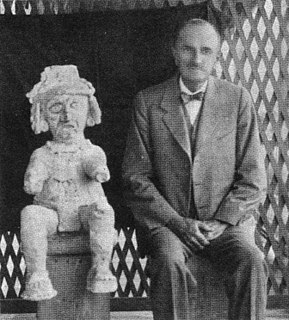 W
WThomas William Francis Gann was a medical doctor by profession, but is best remembered for his work as an amateur archaeologist exploring ruins of the Maya civilization.
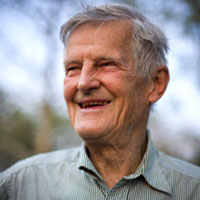 W
WIan James Alastair Graham OBE was a British Mayanist whose explorations of Maya ruins in the jungles of Mexico, Guatemala, and Belize helped establish the Corpus of Maya Hieroglyphic Inscriptions published by the Peabody Museum of Harvard University. Among his related works is a biography of an early predecessor, the 19th-century British Maya explorer Alfred Maudslay.
 W
WNikolai Grube is a German epigrapher. He was born in Bonn in 1962. Grube entered the University of Hamburg in 1982 and graduated in 1985. His doctoral thesis was published at the same university in 1990. After he received his doctorate, Grube moved to the University of Bonn. Nikolai Grube has been heavily involved in the decipherment of the Maya hieroglyphic script.
 W
WRichard D. Hansen is an American archaeologist who is an adjunct professor of anthropology at the University of Utah
 W
WAlfred Vincent Kidder was an American archaeologist considered the foremost of the southwestern United States and Mesoamerica during the first half of the 20th century. He saw a disciplined system of archaeological techniques as a means to extend the principles of anthropology into the prehistoric past and so was the originator of the first comprehensive, systematic approach to North American archaeology.
 W
WYuri Valentinovich Knorozov was a Soviet linguist, epigrapher and ethnographer, who is particularly renowned for the pivotal role his research played in the decipherment of the Maya script, the writing system used by the pre-Columbian Maya civilization of Mesoamerica.
 W
WAlfonso Lacadena García-Gallo, was a Spanish archaeologist, historian and epigraphist, one of the greatest experts in Mayan culture, researcher and specialist in writing and deciphering its texts. He was also a professor at the Complutense University of Madrid.
 W
WDiego de Landa Calderón, O.F.M. was a Spanish bishop of the Roman Catholic Archdiocese of Yucatán. Many historians criticize his campaign against idolatry. In particular, he burned almost all the Maya manuscripts (codices) that would have been very useful in deciphering Maya script, knowledge of Maya religion and civilization, and the history of the American continent. Nonetheless, his work in documenting and researching the Maya was indispensable in achieving the current understanding of their culture, to the degree that one scholar asserted that, "ninety-nine percent of what we today know of the Mayas, we know as the result either of what Landa has told us in the pages that follow, or have learned in the use and study of what he told."
 W
WAlice Dixon Le Plongeon (1851–1910) was an English photographer, amateur archeologist, traveller, and author. She was one of the first people to excavate and study the ancient Maya sites of Chicén Itzá and Uxmal.
 W
WAugustus Henry Julian Le Plongeon was a British-American archeologist and photographer who studied the pre-Columbian ruins of America, particularly those of the Maya civilization on the northern Yucatán Peninsula. While his writings contain many notions that were not well received by his contemporaries and were later disproven, Le Plongeon left a lasting legacy in his photographs documenting the ancient ruins. He was one of the earliest proponents of Mayanism.
 W
WFloyd Glenn Lounsbury was an American linguist, anthropologist and Mayanist scholar and epigrapher, best known for his work on linguistic and cultural systems of a variety of North and South American languages. Equally important were his contributions to understanding the hieroglyphs, culture and history of the Maya civilization of pre-Columbian Mesoamerica.
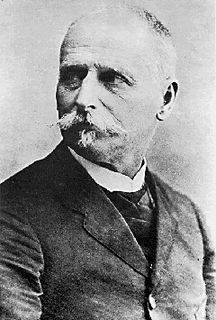 W
WTeobert Maler, later Teoberto was an explorer who devoted his energies to documenting the ruins of the Maya civilization.
 W
WPeter Mathews is an Australian archaeologist, epigrapher, and Mayanist.
 W
WAlfred Percival Maudslay FRAI was a British diplomat, explorer, and archaeologist. He was one of the first Europeans to study Maya ruins. He also fully translated and annotated the best version of Bernal Díaz del Castillo's Historia verdadera de la conquista de la Nueva España from the only original manuscript in 1908 for the Hakluyt Society, which was abridged in 1928.
 W
WMary Ellen Miller is an American art historian and academician specializing in Mesoamerica and the Maya.
 W
WSylvanus Griswold Morley was an American archaeologist and epigrapher who studied the pre-Columbian Maya civilization in the early 20th century. Morley led extensive excavations of the Maya site of Chichen Itza on behalf of the Carnegie Institution and published several large compilations and treatises on Maya hieroglyphic writing. He also wrote popular accounts on the Maya for a general audience.
 W
WYuriy Yuriyovych Polyukhovych is a Ukrainian historian and civil servant. On 10 March 2020, he was appointed as the Acting Minister of Education and Science.
 W
WTat'yana Avenirovna Proskuriakova was a Russian-American Mayanist scholar and archaeologist who contributed significantly to the deciphering of Maya hieroglyphs, the writing system of the pre-Columbian Maya civilization of Mesoamerica. Tatyana Proskuriakova moved to the USA with her parents in 1916. In 1924, she accepted American citizenship. She graduated from the College of Architecture in Pennsylvania (1930). In 1936-1937, she took part in two seasons of archaeological expedition to Piedras Negras (Guatemala). In 1939, she made scientific trips to Copan and Chichen Itza. In 1940-1958, she was a staff member of the Carnegie Institute and developed methods of dating ancient Mayan monuments based on the peculiarities of the fine arts style. In 1950-1955, she worked at the excavations of Mayapan. In 1958, Proskouriakoff moved to the Peabody Museum at Harvard University, where she worked until her retirement in 1977. In her final years of life, she suffered from Alzheimer's disease. The most significant scientific contribution of Tatiana Proskouriakoff is considered to be the consistent application of the structural method to Mayan inscriptions of the classical period, as a result of which she proved that historical events were recorded on the monuments. Publications about new method application have been published since 1960. In 1967, she wrote the preface for the English translation of Yuri Knorozov's monograph "Writing of Maya Indians". However, she did not try to voice Maya texts, although she recognized the method of deciphering the written language.
 W
WConstantine Samuel Rafinesque-Schmaltz was a French 19th-century polymath born near Constantinople in the Ottoman Empire and self-educated in France. He traveled as a young man in the United States, ultimately settling in Ohio in 1815, where he made notable contributions to botany, zoology, and the study of prehistoric earthworks in North America. He also contributed to the study of ancient Mesoamerican linguistics, in addition to work he had already completed in Europe.
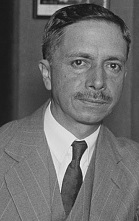 W
WAdrián Recinos (1886–1962) was a Guatemalan historian, essayist, Mayanist scholar and translator, and diplomat. Recinos was a great student of national history, mainly of the Maya civilization and the ancient history of the K'iche' and Kaqchikel people.
 W
WMerle Greene Robertson was an American artist, art historian, archaeologist, lecturer and Mayanist researcher, renowned for her extensive work towards the investigation and preservation of the art, iconography, and writing of the pre-Columbian Maya civilization of Central America. She is most famous for her rubbings of Maya carved stelae, sculpture, and carved stone, particularly at the Maya sites of Tikal and Palenque.
 W
WAlberto Ruz Lhuillier was a Mexican archaeologist. He specialized in pre-Columbian Mesoamerican archaeology and is well known for leading the National Institute of Anthropology and History (INAH) excavations at the Maya site of Palenque, where he found the tomb of the Maya ruler, Pakal. Ruz Lhuillier is sometimes referred to as the "Hitchcock of Archaeology".
 W
WLinda Schele was an American Mesoamerican archaeologist who was an expert in the field of Maya epigraphy and iconography. She played an invaluable role in the decipherment of much of the Maya hieroglyphs. She produced a massive volume of drawings of stelae and inscriptions, which, following her wishes, are free for use to scholars. In 1978, she founded the annual Maya Meetings at The University of Texas at Austin.
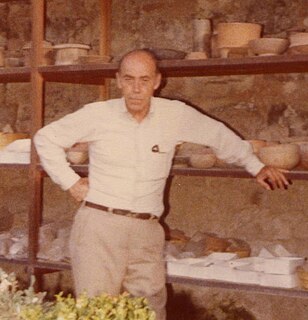 W
WEdwin M. Shook was an American archaeologist and Mayanist scholar, best known for his extensive field work and publications on pre-Columbian Maya civilization sites.
 W
WHerbert Joseph Spinden (1879–1967) was an American anthropologist, archeologist and art historian who specialized in the study of Native American cultures of the US and Mesoamerica. In 1936 he was president of the American Anthropological Association. He was born in Huron, South Dakota. He obtained his Ph.D. in 1909 at Harvard where he specialized in Maya art under the direction of Alfred Tozzer, he then worked American Museum of Natural History where he undertook archeological studies in Mexico and Central America. While working as an archeologist in Central America he and Sylvanus G. Morley were among the American scientists gathering intelligence for the US Army. He then curated the collection of the Peabody Museum at Harvard, before taking museum positions in Brooklyn and Buffalo. He also did ethnographic studies among the Nez Percé. In 1919 he published a study of Maya calendrics giving a correlation between the Maya calendar and the Gregorian calendar – a correlation which was nonetheless not widely accepted.
 W
WJohn Lloyd Stephens was an American explorer, writer, and diplomat. Stephens was a pivotal figure in the rediscovery of Maya civilization throughout Middle America and in the planning of the Panama railroad.
 W
WJohn Edgar Teeple was a chemical engineer who served as President of The Chemists' Club from 1921-1922 and received the Perkin Medal in 1927 for his work on potash during World War I.
 W
WCyrus Thomas was a U.S. ethnologist and entomologist prominent in the late 19th century and noted for his studies of the natural history of the American West.
 W
WEdward Herbert Thompson was an American-born archaeologist and long-time consul to Yucatán, Mexico.
 W
WGeorge Clapp Vaillant was an American anthropologist.
 W
WJean-Frédéric Maximilien de Waldeck was a French antiquarian, cartographer, artist and explorer. He was a man of talent and accomplishment, but his love of self-promotion and refusal to let the truth get in the way of a good story leave some aspects of his life in mystery.
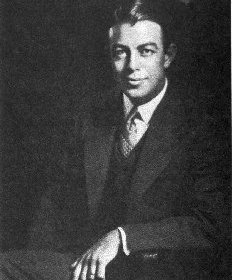 W
WBenjamin Lee Whorf was a US linguist and fire prevention engineer. Whorf is widely known as an advocate for the idea that differences between the structures of different languages shape how their speakers perceive and conceptualize the world. This principle has frequently been called the “Sapir–Whorf hypothesis”, after him and his mentor Edward Sapir, but Whorf called it the principle of linguistic relativity, because he saw the idea as having implications similar to Einstein’s principle of physical relativity. The idea, however, follows from post-Hegelian 19th-century philosophy, especially from Wilhelm von Humboldt; and from Wilhelm Wundt's Völkerpsychologie.
 W
WFrancísco Ximénez was a Dominican priest who is known for his conservation of an indigenous Maya narrative known today as Popol Vuh. There is, as Woodruff has noted, little biographical data about Ximénez. Aside from the year, his birth and baptismal records do not agree on the actual date of his birth, and the year of his death is less certain, either in late 1729 or early 1730. He enrolled in seminary in Spain and arrived in the New World in 1688, where he completed his novitiate.
 W
WGalina Gavrilovna Yershova, or Ershova is a prominent Russian academic historian, linguist, and epigrapher, who specialises in the study of the ancient civilisations, cultures, and languages of the New World. As an Americanist scholar, her area of expertise is in the field of Mesoamerican studies, and in particular that of the pre-Columbian Maya civilisation, its historical literature, and its writing system. Yershova is a former student and protégé of the famed Russian linguist and epigrapher Yuri Knorozov, renowned for his central contributions towards the decipherment of the Maya script.